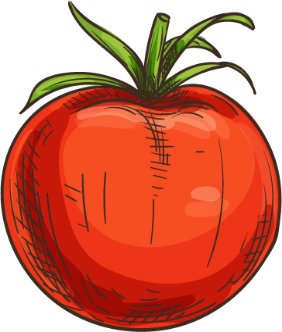Food and Procurement
Increasing sustainability in food and procurement is a big undertaking. Vendor relations, tracking procurement, and understanding reusables are crucial to reducing waste in food and procurement.
The Sustainable Lunchrooms case study covers: food and procurement (current page), equipment, student engagement, and certificates and resources.

Bulk Milk
One of the first changes implemented in 2009 as part of the School Food Project’s meal program overhaul was to introduce bulk milk dispensers. Traditionally served in 8-ounce cartons to ensure compliance with federal meal reimbursement guidelines, milk is often one of the most wasted school meal components. While all National School Breakfast and National School Lunch Program operations are required to serve two types of milk, BVSD chooses not to rely on students taking a full eight ounces to create a reimbursable meal.

Bulk Milk
One of the first changes implemented in 2009 as part of the School Food Project’s meal program overhaul was to introduce bulk milk dispensers. Traditionally served in 8-ounce cartons to ensure compliance with federal meal reimbursement guidelines, milk is often one of the most wasted school meal components. While all National School Breakfast and National School Lunch Program operations are required to serve two types of milk, BVSD chooses not to rely on students taking a full eight ounces to create a reimbursable meal.
While students are welcome to take a full eight ounces of milk with their meal, BVSD promotes the selection of three of the four other meal components - fruit, vegetable, meat/meat alternate and grain - before students arrive at the milk dispensers. As such, students are only taking as much milk as they will drink.
In addition to cutting down on milk waste from unfinished eight-ounce servings, bulk dispensers reduce the waste generated by milk cartons. In a medium-sized school district like BVSD, that keeps nearly 1.5 million single-serve milk cartons out of the waste stream each school year. The reduced milk waste also allows BVSD to serve organic 1% milk in all cafeterias; organic bulk milk can be less expensive per serving than conventional milk served in individual cartons or plastic containers. As an ardent supporter of a sustainable food system, BVSD values bulk milk as an additional opportunity to support the organic industry.
Keywords
Bag in Box: Bulk milk packaged in a BIB, as opposed to crates of single-use cartons reduces the amount of single-use items in the waste stream. Bulk milk also can reduce the liquid waste in a school meal program.
Purchasing organic supports sustainable farming methods that do not use chemical fertilizers, pesticides, or other artificial agents.
Reusable Plastic Containers: RPCs can rotate throughout a district’s operation to eliminate the need for deliveries in one-time use cardboard.
Reusables: Alternative to single-use supplies during meal service. Reusables include durable trays, real silverware, and hard plastic cups.
Impact of Bulk Milk |
1.5M
Single-serve milk cartons kept out of the waste stream each school year |
Impact of Bulk Milk |
|
1.5M
Single-serve milk cartons kept out of the waste stream each school year |
BVSD has established operating procedures to overcome challenges associated with bulk milk:
Reusable cups provided to students are nine ounces in order to comply with USDA requirements allowing for an eight-ounce fill
In order to reduce spills as well as waste, students are encouraged to take only as much milk as they would like, and to return for more as often as they would like during a meal period.
While students purchasing school lunch are invited to return for more milk, that flexibility makes it more difficult for staff to track the students who are purchasing milk a la carte. BVSD established a policy requiring students to enter their meal account PINs prior to pouring a glass of milk. The policy also reduces spills near the register as students move straight from the dispenser to their seats.
Another impact of bulk milk on an operation is the ability to move and maneuver BIBs (bag-in-box) of milk, as opposed to crates of cartons. In order to avoid on-the-job injuries, BVSD introduced a standard operating procedure requiring any lift over 40 pounds to be performed by at least two staff. Arriving in five gallon bibs, staff use two people to lift the 43 pounds of milk into the dispenser, which many times is on top of a table and nearly at shoulder height.
Reusables vs. Disposables
In 2009, BVSD also decided that one of the most impactful ways to reduce the operation’s carbon footprint was to reduce the amount of waste generated by non-food supplies during meal service.
Instead of single-use trays, silverware, and cups, the district fundraised to purchase durable trays, real silverware and hard plastic cups.
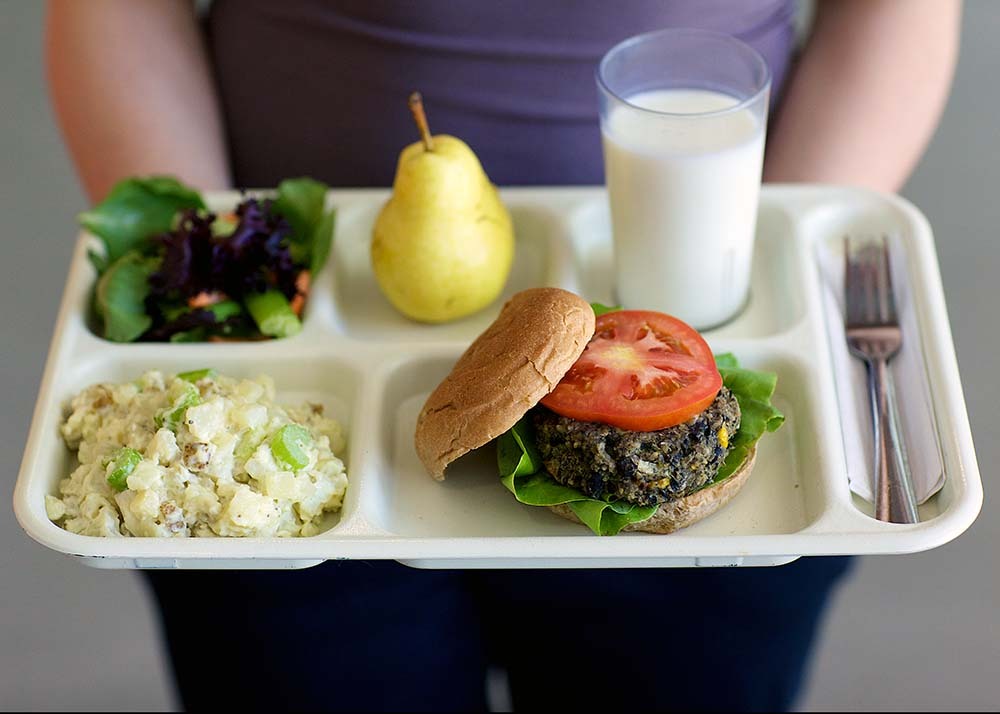

Reusables vs. Disposables
In 2009, BVSD also decided that one of the most impactful ways to reduce the operation’s carbon footprint was to reduce the amount of waste generated by non-food supplies during meal service.
Instead of single-use trays, silverware, and cups, the district fundraised to purchase durable trays, real silverware and hard plastic cups.
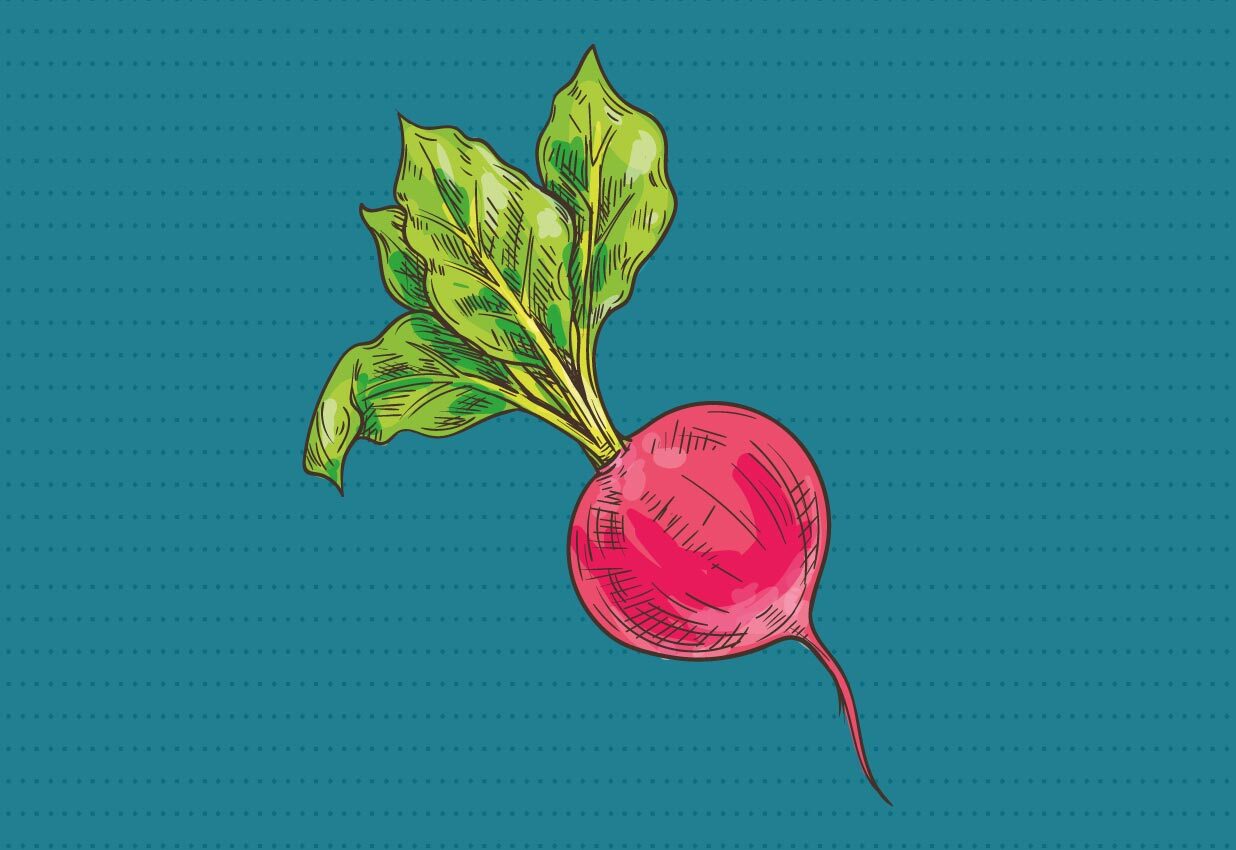
With nearly 14,000 meals served daily at 54 sites, that equates to approximately three-quarters of a million single-use items saved from the waste stream each year.

With nearly 14,000 meals served daily at 54 sites, that equates to approximately three-quarters of a million single-use items saved from the waste stream each year.
However, implementing the use of durables requires significant planning and incurs additional upfront costs for equipment and ongoing costs for labor. With compostable boats costing less than a dime per each, and styrofoam costing even less, the commitment to durable trays must be more than an environmental one. A food service operation must account for the cost of:
- durables,
- dishwashing equipment,
- consumable chemicals, such as dish detergents
- and labor to wash and sanitize the durables.
The upfront cost of commercial dishwashers and durable serveware can feel monumental, and the savings associated with reducing purchases of single-use items can feel small. However, the commitment to a more sustainable food services operation through durables can lend itself to the implementation of further environmentally friendly practices.
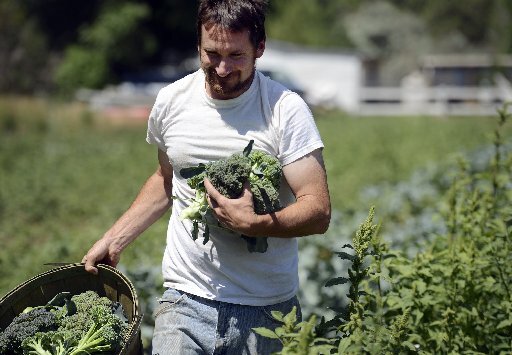
In the Boulder Valley School District, Food Services is supported by the local nonprofit zero waste provider, Eco-Cycle and their Green Star School Program (GSS). Through this partnership, school communities gain a better understanding of the impact of a healthier waste stream through education on compost, food waste, recycling and reuse (discussed below).
Before introducing durable wares, all students participate in assemblies and education programs to engage in reducing environmental impacts throughout the building. To participate in the GSS program, schools are required to identify student and staff champions to promote zero waste practices and support their peers throughout the school year.

In the Boulder Valley School District, Food Services is supported by the local nonprofit zero waste provider, Eco-Cycle and their Green Star School Program (GSS). Through this partnership, school communities gain a better understanding of the impact of a healthier waste stream through education on compost, food waste, recycling and reuse (discussed below).
Before introducing durable wares, all students participate in assemblies and education programs to engage in reducing environmental impacts throughout the building. To participate in the GSS program, schools are required to identify student and staff champions to promote zero waste practices and support their peers throughout the school year.
Students are empowered to become champions of their school’s waste reduction and collaborate with Eco-Cycle and the School Food Project to encourage the proper use and reuse of durable trays, cups and silverware in the cafeteria.
Although loss of any durable item is inevitable in a school environment, looping the school community into the bigger picture through ongoing education, hands-on learning, and leadership opportunities, the school takes ownership of the overall goal to achieve a more environmentally friendly kitchen and cafeteria.
Procurement and Reducing Food Waste

Agriculture places a significant burden on environmental resources by impacting the availability of freshwater and disrupting ecosystems to expand farming and ranching operations (World Wildlife Fund). As such, it is important for food service departments and school communities to understand the connection between soil health, water use and the overall environmental impacts of growing, procuring, transporting, and wasting food.
BVSD gives preference in its food purchasing to local growers, producers and processors in Boulder and Broomfield counties, Colorado; then to the surrounding counties (Gilpin, Grand, Larimer, Clear Creek, Arapahoe, Douglas, Weld); to other areas of Colorado; and finally to other states in the Rocky Mountain region (Idaho, Montana, Utah, Wyoming, New Mexico).

Agriculture places a significant burden on environmental resources by impacting the availability of freshwater and disrupting ecosystems to expand farming and ranching operations (World Wildlife Fund). As such, it is important for food service departments and school communities to understand the connection between soil health, water use and the overall environmental impacts of growing, procuring, transporting, and wasting food.
BVSD gives preference in its food purchasing to local growers, producers and processors in Boulder and Broomfield counties, Colorado; then to the surrounding counties (Gilpin, Grand, Larimer, Clear Creek, Arapahoe, Douglas, Weld); to other areas of Colorado; and finally to other states in the Rocky Mountain region (Idaho, Montana, Utah, Wyoming, New Mexico).
BVSD’s local purchasing is generally accomplished through direct relationships with farms, dairies, and producers. Local farmers working with the district are asked to complete a request for qualifications (RFQ), prioritizing the following qualifications:
- Farm Certified Organic, Certified Naturally Grown, member of Bionutrient Food Association, or other (farm without pesticides, herbicides, GMOs).
- Farms located within 50 miles of BVSD Ed Center at 6500 E. Arapahoe Road.
- Farms willing to commit in advance to estimates of needs, willing to receive orders via email PDF on Thursday for delivery the following Thursday/Friday to warehouse.
- Produce delivered within 48 hours of harvest.
- Produce delivered washed, in standard case weight sizes, in reusable containers/crates.
- Farmers willing to visit schools and host student farm visits.
- Payment net 30.
Each December, BVSD begins menu planning for the following school year. After reviewing successes and challenges of purchasing produce from local farmers during the spring and current fall semesters, the Food Services Director, Procurement Manager, and Production Manager/Chef meet with farmer partners to discuss the year ahead. This allows farmers and Food Services to agree upon the produce to be purchased, and avoids any confusion or uneducated guesses at what type & quantity of produce the district will want to purchase. (Click here for an example of BVSD’s Harvest of the Month Produce Planning sheet.) The growing and purchasing plan for the upcoming year gives farmers a sense of security about who will buy their product and ensures BVSD will know sources for local fruits and vegetables. By coordinating with farmers before planting season, this type of relationship can avoid unwanted produce, clarify fresh produce schedules, and promote local agriculture.
BVSD’s local produce procurement system also maintains built-in flexibility to account for unexpected and unavoidable circumstances, such as acts of mother nature. In August 2018, many partner farmers were devastated by a series of hail storms. Severe weather destroyed 80% of the tomato and pepper crops at one such farm and made much of their crop less marketable at farm stands, CSAs, and farmers markets. BVSD’s focus on local procurement and produce flexibility allowed the department to adjust purchasing plans and receive damaged produce, thus reducing food waste on area farms. Damaged tomatoes made great tomato sauce while hail-pocked peppers, squash, and cucumbers were chopped up for use on the salad bar. Such opportunities allow additional venues for educating students about “seconds” or “imperfect” produce, sources of food waste and food loss, and the importance of the district’s role in alleviating such stresses on the community.
Harvest of the Month Schedule
| Month | 2014-15 | 2015-16 | 2016-17 | 2017-18 | 2018-19 |
|---|---|---|---|---|---|
| AUGUST | Peaches | Peaches and Summer Squash | Peaches and Summer Squash | Peaches and Summer Squash | Peaches and Summer Squash |
| SEPTEMBER | Tomatoes | Tomatoes and Corn | Tomatoes and Corn | Tomatoes and Zuchinni | Tomatoes and Zucchini (Melon) |
| OCTOBER | Zucchini and Yellow Squash | Bell Peppers and Apples | Bell Peppers and Apples | Cucumber and Bell Peppers | Cucumber and Bell Peppers |
| NOVEMBER | Beets | Pumpkin | Pumpkin | Broccoli and Cauliflower | Carrots and Cauliflower |
| DECEMBER | Pumpkin | Beets | Beets | Winter Squash | Winter Squash and Hardy Greens |
| JANUARY | Winter Squash | Winter Squash (Butternut and Spaghetti) | Winter Squash | Beets and Turnips | Beets and Turnips |
| FEBRUARY | Potatoes | Cabbage | Cabbage | Potatoes and Cabbage | Potatoes and Cabbage |
| MARCH | Carrots | Carrots | Carrots | Beans and Legumes | Beans and Legumes |
| APRIL | Radishes | Spinach | Spinach | Spring Greens | Spring Greens |
| MAY | Spinach | Radishes | Radishes | Radishes and Peas | Radishes and Strawberries |
Reusable Plastic Containers (RPCs)
BVSD’s commitment to low-waste procurement is also reflected in the implementation of reusable plastic containers (RPCs).
Instead of receiving produce in one-time use cardboard, the district purchased a set of RPCs to be rotated throughout the operation. Marked with a red stripe to differentiate them from others’ RPCs, BVSD’s supply is stored outside of the warehouse, on the loading dock, for local farmer partners to pick up as needed. Farmers fill the RPCs to a specified weight depending on the type of produce and deliver them to the warehouse. BVSD sends the produce to the regional production kitchens and returns the RPCs to the stock for farmers to pick up. In addition to reducing cardboard waste, this process also reduces the cost for farmers, translating to higher yields for them and lower food costs for the district. BVSD has implemented a similar RPC system for fresh animal proteins, including bone-in chicken, ground beef and hamburger patties, and other locally produced products, such as tortillas.
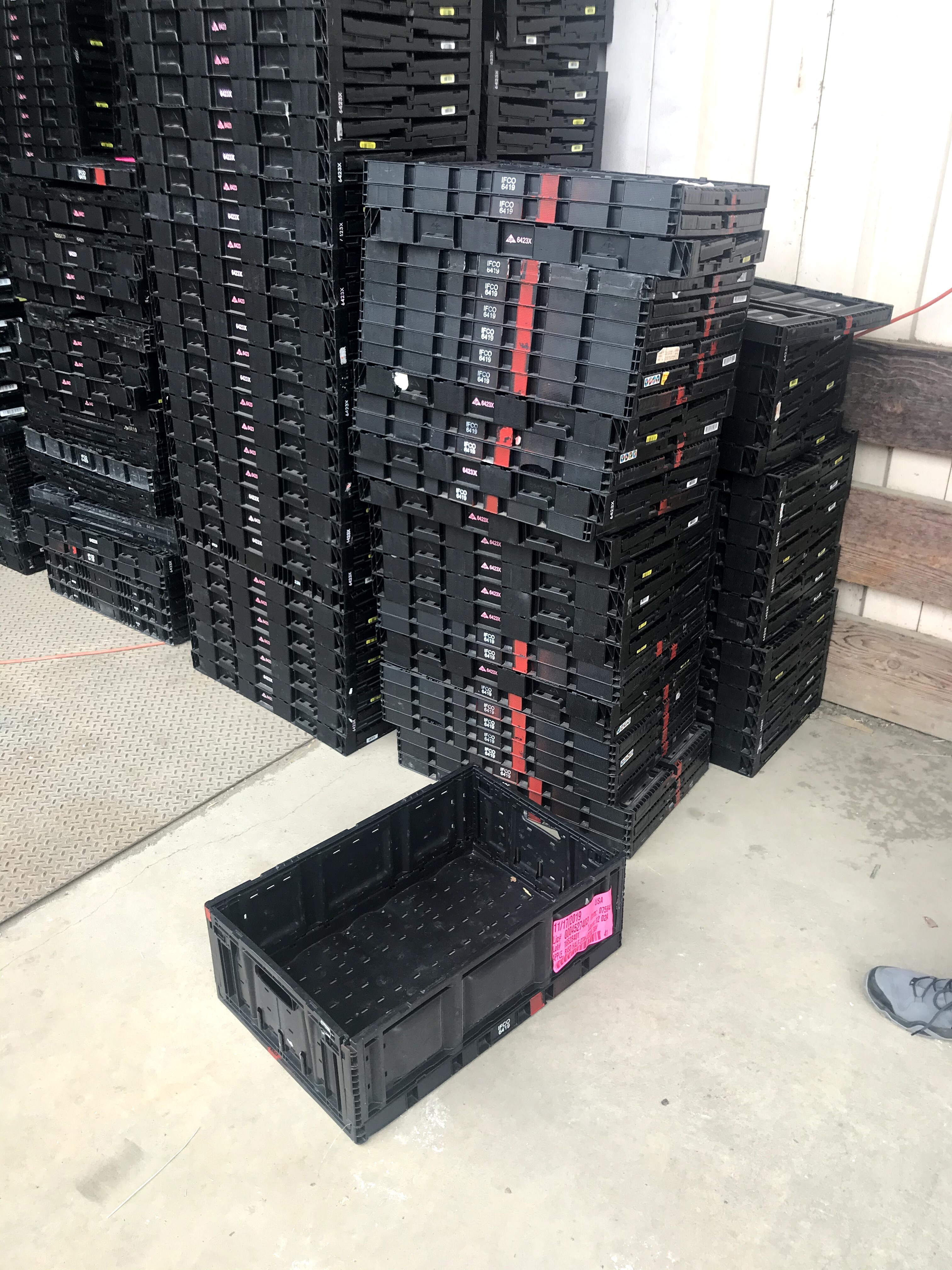
Menu Cycles
By tailoring the menu to the latest food trends, parents’/students’ wants, and seasonally available local foods, BVSD is able to create a highly desired, cost effective and sustainable year-long menu calendar.


Menu Cycles
By tailoring the menu to the latest food trends, parents’/students’ wants, and seasonally available local foods, BVSD is able to create a highly desired, cost effective and sustainable year-long menu calendar.
The School Food Project also collects feedback from parents and students after the first semester of each school year. Accompanied by a letter from the Food Services Director, an online survey is sent to all BVSD households, asking for everyone’s top three items to keep and top three items to remove from the menu for the following year. The survey asks families to share their ideas for new entrees and sides to add to the menu. Through a series of target questions, Food Services also uses the opportunity to get a sense of the community’s understanding of the quality of the food, the lunchroom nutrition education programs, and the district’s commitment to a sustainable food system.
Steps
Three weeks prior to the serve day, school-based satellite kitchen lead staff place their orders to the production kitchens, specifying how many of each entree, side, and salad bar servings they’ll need.
Two weeks ahead of the serve day, production kitchens (led by the sous chefs) aggregate the orders from the 14-17 satellite schools they serve, consult existing inventory, and place their orders to the central warehouse.
BVSD’s Procurement Manager then takes the consolidated orders and submits the purchase order to vendors for the quantities needed for the entire school district. Aggregated orders leverage buying power and provides multiple checkpoints throughout the order process to ensure that sites are not over-ordering in a way that will result in unusable, wasted food.
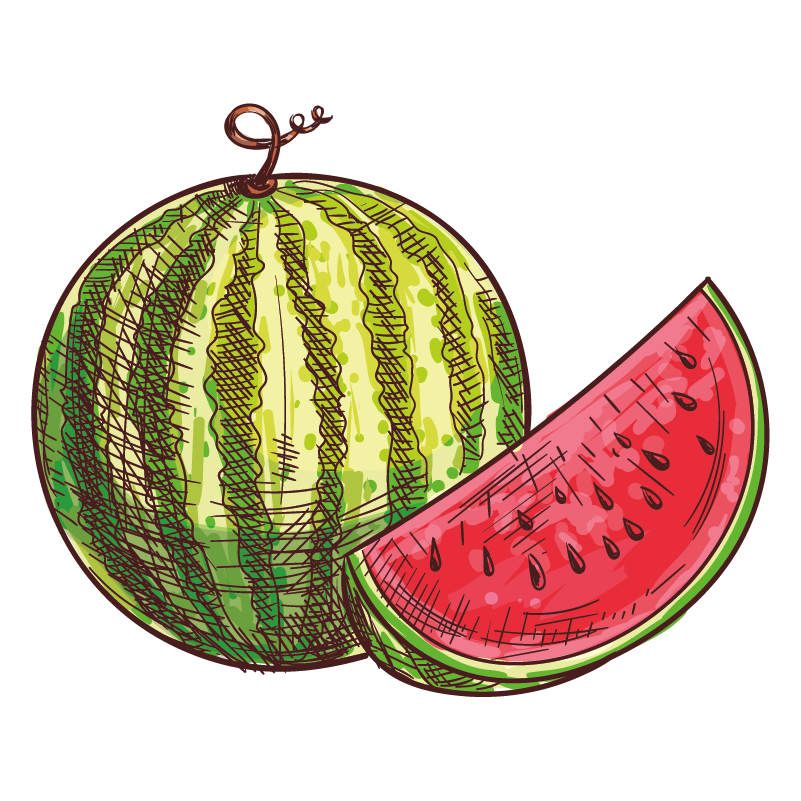
While maintaining flexibility on salad bars, BVSD’s lunch menu follows a regular structure to ensure predictability, projections, and tracking of procurement and meals served.

While maintaining flexibility on salad bars, BVSD’s lunch menu follows a regular structure to ensure predictability, projections, and tracking of procurement and meals served.
Using a six-week cycle makes it easier to predict the quantities needed each time a menu item is served.
Kitchen managers track the number of servings ordered versus the number of meals served and use that data to adjust their orders for the next time that same menu mix comes up. BVSD’s procurement manager and chefs also depend on the cycle menu to identify areas of overlap and multiple uses for ingredients. With this information, procurement managers can aggregate purchases, receive items in bulk and reduce over-purchasing of items or ingredients that will not get used before they go out of date.
Cycle menus can allow school districts to project purchasing needs for the entire year, reducing “guesstimates,” overpurchasing, and resulting waste.
BVSD has developed a somewhat complex, but well-functioning system to order products from vendors far enough ahead so as to avoid any last-minute delays, but not so early as to make large guesses about the number of meals to be prepared and served at any given sites.
Discover More

